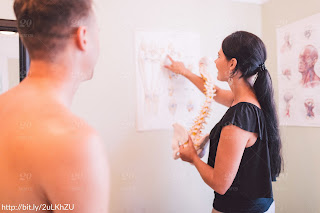Over the course of this weekend two main themes filled my
social media feed. The first were videos of the amazing feats of strength from
the various events at the Arnold Sports Festival (side note: props to two-time
Arnold Strongman Classic champ Hafthor Bjornsson as well as to powerlifting
world record breakers Blaine Sumner and Stefi Cohen for their successes). The
other was this study
that provided a systematic review & meta-analysis on pain science education
(PNE). The article showed that…
·
PNE did not significantly reduce pain or
disability
·
But PNE did reduce catastrophizing and
kinesiophobia
It created a lot of controversy and debate amongst
therapists from different backgrounds & ideologies as well as a need for
clarification as to what PNE is and isn’t – the topic of this article.
What PNE isn’t
PNE is not
1) A cure or magic bullet
As we’ve discussed above pain science education doesn’t
create significant improvements in pain. This review showed a reduction in pain
of 3.2/100 – less than half a point on a 0-10 pain scale.
2) A standalone intervention
Some studies have shown better effectiveness of PNE mixed
with exercise versus one
or the other
alone. Granted this is still being studied and is still up for debate.
3) An intervention that will produce the same results in
everyone
Some qualitative
studies have shown that
PNE can create great reductions in fear and improvements with activity in some
people but can be useless or even counterproductive with others.
Side note: studies like these, plus my own experiences,
are why I disagree with (well meaning but misguided) practioners who think that
everyone needs PNE. As with everything else the intervention needs to be
tailored to the individual.
4) The only part of biopsychosocial rehabilitation
As Jarod Hall and Sandy Hilton say “pain science should be the air you
breathe” – not something you just do to people. There are many components of
biopsychosocial rehab (and proper rehab in general) including
·
Simply being a good person who’s attentive,
caring and is a good listener
·
Acknowledging that there are numerous
contributors to the pain experience, working to address these different areas and
referring out for help when needed
·
Educating people on how to get back to a
lifestyle that is meaningful for them through pacing
·
Also educating people on healthy lifestyle
habits
·
Experiential learning & graded exposure to
activities: to me this is a great way for people to experience that hurt doesn’t
equal harm and that they can likely do more than what they’re capable of
·
Getting people more physically active
·
Using positive language & self-management
skills to empower the patient and build their self-efficacy
What PNE is
PNE is
1) A means to explaining the science of pain and the
contributing factors behind a person’s pain
2) A means to (hopefully) decrease some of the anxiety,
fear and negative beliefs surrounding pain and a means to get people more
physically active & working towards the lives they want to live.
I hope this article sheds some light for you (and others)
on what PNE truly is & isn’t and where it fits in the grand scheme of
things. As always – thanks for reading.


Chiropractor is health care professional who takes special training to adjust your spine that may be causing spine related problems. If you are searching for Best Chiropractor UAE then Dr. Ayhem Sabry is one the best professional Chiropractor.
ReplyDelete